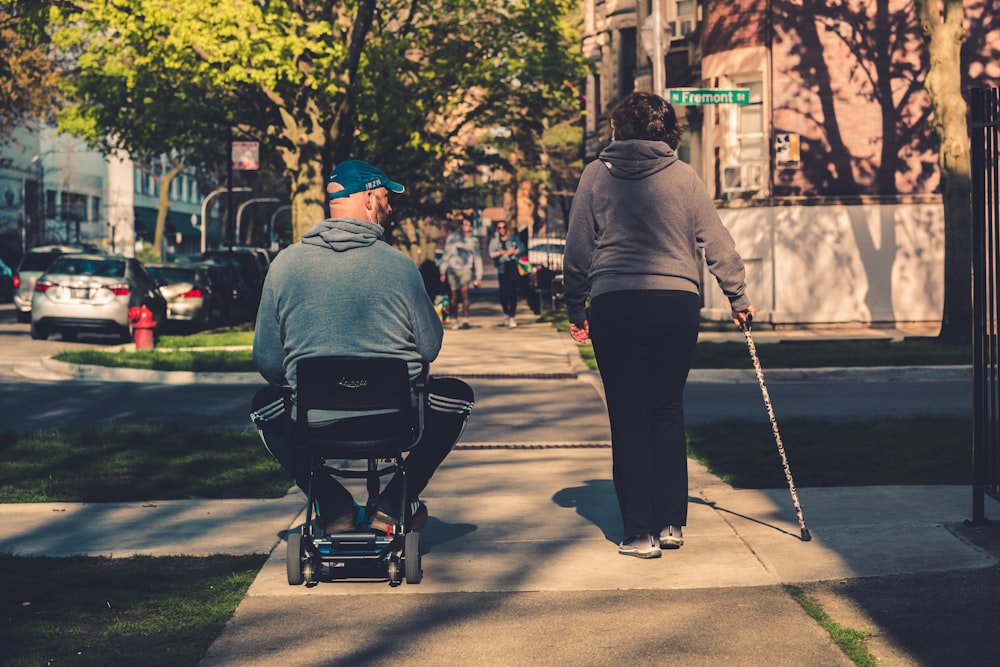目次
可能であれば大腿骨近位部骨折例の移動能力の目標はT字杖歩行獲得とすべき理由
本邦では大腿骨近位部骨折例に対するリハビリテーションの中でT字杖歩行の獲得を移動能力の目標とすることが多いと思います.
もちろん入院前の日常生活動作能力によって移動能力の目標もさまざまですが,在宅での移動を考える際には最低限T字杖歩行の獲得をといったケースが多いと思います.
でもT字杖歩行獲得には在宅での移動以外にも大きな意味があります.
今回はなぜ大腿骨近位部骨折例の移動能力の目標をT字杖歩行獲得とすべきかについて示した研究論文をご紹介させていただきます.

今回ご紹介する論文
J Orthop Trauma. 2012 Mar;26(3):163-71. doi: 10.1097/BOT.0b013e31821e1261.
Predictors for ambulatory ability and the change in ADL after hip fracture in patients with different levels of mobility before injury: a 1-year prospective cohort study
Naoshi Fukui 1, Yoshinobu Watanabe, Tetsuo Nakano, Takeshi Sawaguchi, Takashi Matsushita
Affiliations expand
PMID: 21918484 DOI: 10.1097/BOT.0b013e31821e1261
今回ご紹介する論文は2012年に掲載された論文です.
研究の目的
Objectives: To investigate the predictors of functional outcome and changes in the basic activities of daily living in older adults who sustained hip fractures, considering the level of ambulatory ability before injury.
この研究では,大腿骨近位部骨折を受傷した高齢者のアウトカムと基本的な日常生活動作能力の推移に関する予測因子を,受傷前の歩行能力のレベルを考慮して検討することを目的としております.
研究デザイン
Design: A prospective observational cohort study.
研究デザインは前向き観察コホート研究となっております.
研究セッティング
Setting: One university hospital and 13 community teaching hospitals.
この研究は1つの大学病院と13の地域の医療機関で行われた多施設共同研究です.
研究の対象
Patients: A consecutive cohort of 650 patients who underwent surgery for a hip fracture between December 2004 and January 2006.
対象は2004年12月から2006年1月の間に大腿骨近位部骨折のために観血的治療を受けた650例となっております.
アウトカム測定
Main outcome measures: Recovery of ambulatory ability and independence in activities of daily living 6 and 12 months after surgery.
主な評価項目は術後6ヵ月および12ヵ月後の歩行能力および日常生活動作の回復としております.
研究の結果
Results: Ambulatory ability recovered to the prefracture level in approximately half of the patients 6 months after surgery, and those ratios changed little in the next 6 months. In patients who were community ambulators before fractures, the independence in bathing before fractures was a strong predictor of ambulatory ability after surgery, but this was not the case in the former household ambulator group. The attainment of assisted ambulation with a walking cane at hospital discharge was a reliable predictor of ambulatory ability in both former community ambulator and household ambulator groups.
歩行能力は術後6カ月で約半数のクライアントが骨折前の状態に回復し,その比率はその後6カ月間でほとんど変化しておりません.
骨折前に屋外の移動が可能であったクライアントでは,骨折前の入浴の自立度が術後の歩行能力の強い予測因子でありましたが,受傷前に屋外の移動が困難であったクライアント予測因子は異なりました.
また退院時に杖歩行が可能になるか否かを予測する要因は受傷前に屋外歩行が自立したクライアントも,受傷前に屋外歩行が困難であったクライアントも同様でありました.
研究の結論
Conclusions: Ambulatory ability after hip fractures was considered to be determined within 6 months after surgery. There was some difference in prognostic factors for ambulatory ability according to the level of mobility before fractures. The attainment of single cane (T-cane) gait at hospital discharge can serve as a reliable predictor of ambulatory ability after fractures, irrespective of the level of mobility before the injury.
大腿骨近位部骨折後の最終的な歩行能力は術後6カ月以内にきまると考えられます.
また歩行能力の予後因子は,受傷前の移動能力に応じて若干の差がありました.
退院時のT字杖歩行の達成度は受傷前の運動能力のレベルに関わらず,骨折後の歩行能力の信頼できる予測因子となり得ることが明らかとなりました.
今回はなぜ大腿骨近位部骨折例の移動能力の目標をT字杖歩行獲得とすべきかについて示した研究論文をご紹介させていただきました.
今回の論文の結果から考えると,T字杖歩行を獲得できれば6ヶ月後の歩行能力も高くなるというわけですので,
退院時にT字杖歩行を獲得することが非常に重要であることが分かります.
当たり前といえば当たり前の結果ですが…






